The first time I met Aaron Hadlow was on the eastern shores of Silicon Valley. Slotted between a golf range and a muddy quagmire of a kite spot, he was making his first appearance in the US as part of a larger international tour. Aaron was a scrawny kid with handlers, and given that it was his first trip to the states without his parents, he was cloistered in the back of a Chevy SUV surrounded by a bizarre entourage of “Stretch” Reidell and Josh Mulcoy from the Santa Cruz surf world. Aaron had just won the King of the Bay, a provincial California competition, not to be confused with Cape Town’s King of the Air, and yet everyone from the farthest reaches of the kite world had shown up to get a glimpse of the sport’s newest phenom. 2004 was a pivotal time ”” kiteboarding was finally reaching the broader world, heroes were being dethroned and Aaron was a quiet yet confident freestyle enigma that would define the competitive side of our sport for more than a decade to come. // Intro by Brendan Richards
NOWADAYS, IT SEEMS LIKE AN EARLY START IS A PREREQUISITE FOR BEING ON TOUR. YOU WERE THE FIRST CHILD PRODIGY OF COMPETITIVE KITEBOARDING. HOW DID THAT COME ABOUT FOR YOU?
I was born in southeast England, the Kent area, which is away from the sea. My dad’s passion was windsurfing, so by the time I was four or so, my parents sold their business, took me out of school and we went around Europe in a camper van and did a world tour of windsurfing. Before I had even started competing in kiteboarding I had already seen a lot of the world. When we came back, he decided he wanted to live in Cornwall, which is in the southwest of England; it’s the surfing mecca of the UK and the best spot for waves. He went down there and did windsurfing and that’s where I grew up. I’d go to the beach after school and learned to kite with him.
My dad started kiting in 1998 when it really was first beginning. I don’t think there was even an inflatable available. He first started on a Flexifoil Sky Tiger with small little handles. Even with the first inflatable kites, it was still super unsafe, but once it was a bit safer, then he finally let me give it a go. I was 10 when I was flying his kite and I remember his older friends thinking that it was super irresponsible. He knew I had complete control, and when we went to the Dominican Republic in the summer of 2000 I was up and going, turning around. at was basically the real beginning.
COMPETITION HAS BEEN THE DRIVING FORCE BEHIND YOUR CAREER. HOW DID THAT PARTICULAR VECTOR TAKE ROOT?
I got my first kite for Christmas and the next summer (in 2001) there was this British event. I was probably doing some jumps at that time. It was the BKSA in Weymouth. My dad went there to enter but I ended up wanting to compete as well. They had to make up an inscription for juniors because there were no kids competing at the time, but by the end of the year, I finished 3rd in the men’s amateur division. at was the first winter I went to South Africa and I think that’s what set me going because I didn’t miss a whole winter of kiting; I kited almost every day in SA. By the next season I was in the pro division in the UK and I went to that same event already doing board o s and stuff like that.
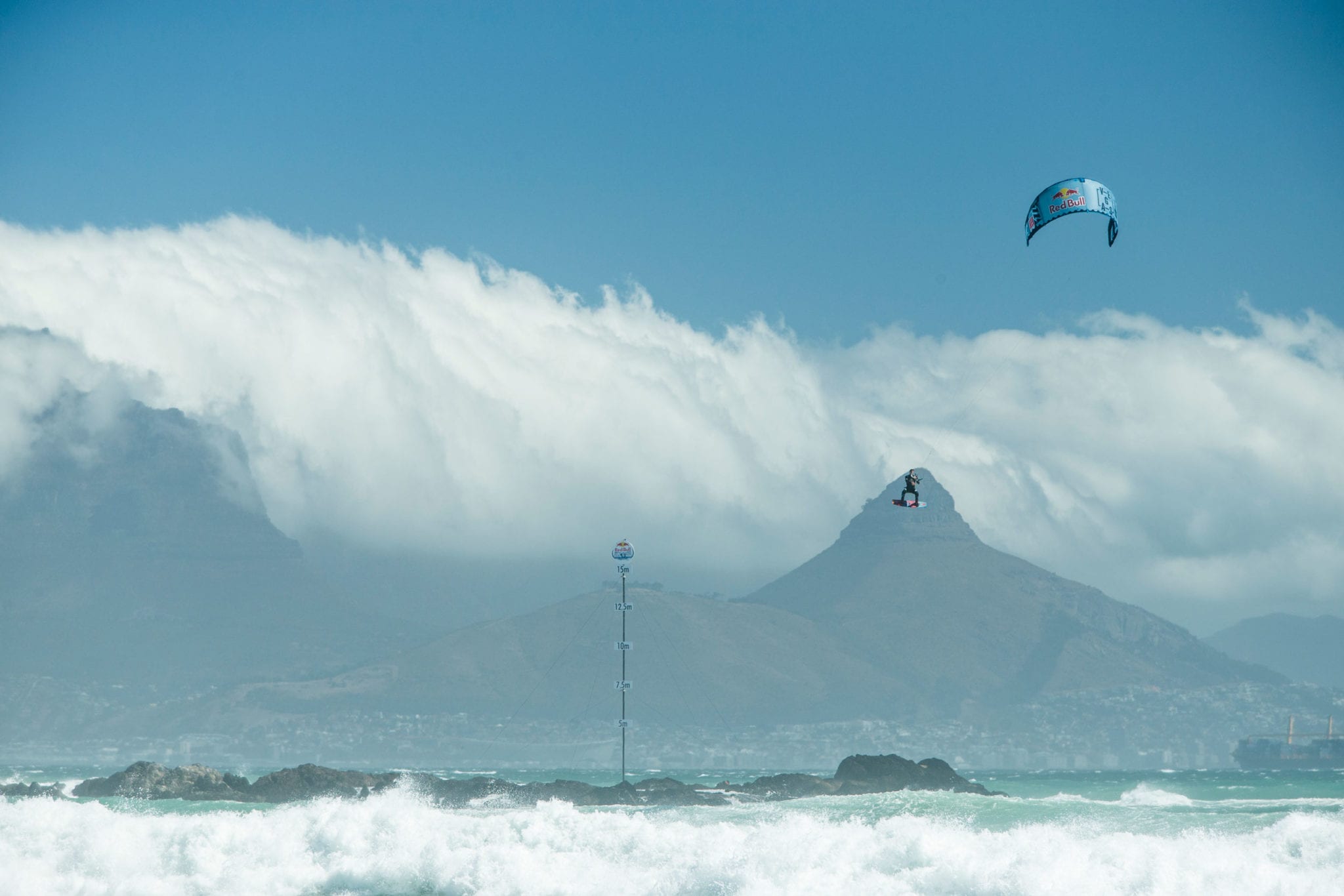
Photo // Christian Black / Red Bull Content Pool
SKY SOLBACH’S FIRST MEMORY OF YOU INVOLVES A SEAT HARNESS, KITE PANTS AND CHEATER HANDLEPASS RIG. YET IN HIS RECOLLECTION, YOU WERE ALWAYS FIRST ON AND LAST OFF THE WATER. DO YOU CRINGE WHEN YOU THINK OF THE EARLY FREESTYLE DAYS?
No, not really. I love the board off; I took it pretty far and I enjoyed that time. I was young enough [to kite long hours] and I had the energy to do it. In Europe at the time, that’s just what kiteboarding was. I would go into the shop where my dad got all his kites and I’d watch the videos of Lou and all the Maui guys in boardshorts doing handlespasses on 2-line kites. at was a different sport to me. I didn’t realize and I just thought I wouldn’t be doing that. European kiteboarding was going a different direction ”” board offs to the crazy level with backrolls and spinning the board around three times. So it’s just what I did.
IN THE LAST QUESTION, WE KIND OF GLASSED OVER THE HANDLEPASS RING DRAMA OF 2003. HOW DID THAT START AND HOW DID IT COME TO SUCH A QUICK END?
My dad had the idea to develop this ring around my back. I wanted to do handlepasses but I was still small and not really developed, so we thought the ring would take the pressure o . We went to that year’s first event in Cabarete thinking that this would be something new and different, but when we got there, the Space Monkeys crew were doing handlepasses without the ring. As far as the Kiteforum drama, I really didn’t look at it; my dad probably protected me from it. When I saw that no one really liked it and the judges were scoring it way less, I stopped using it. We stayed in the Dominican two weeks after that event and I just learned how to do handlepasses (without the ring), and then carried on only focusing on that.
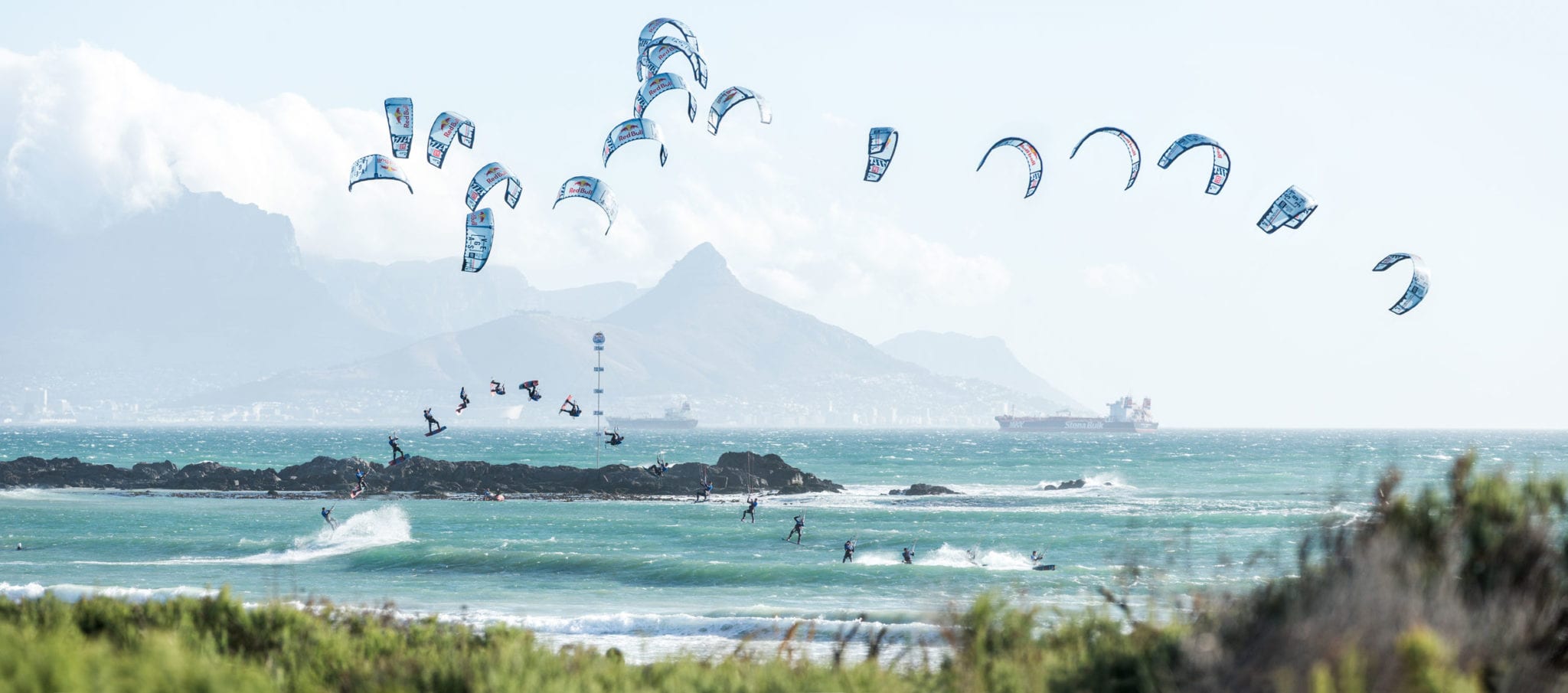
Aaron went head-to head with lifelong rival, Kevin Langeree, and ultimately stole the 2016 KOA show with a mega-loop unhooked handlepass ”” no easy feat given the high stakes of the modern extreme air freestyle contest. // Photo Ydwer van der Heide/Red Bull Content Pool
WHO BROUGHT THE HANDLEPASS INTO ORGANIZED COMPETITION AND HOW DID YOU GO ABOUT TAKING THEM OUT?
It was basically the guys who did the Space Monkeys movie: Jaime Herraiz, Will James and Je Tobias were doing them, but it was Martin Vari that was miles ahead. Everyone was learning the single HP and just landing normal ones in competition, but then Martin went out and did a double. He was two steps ahead of everyone. At the end of that season I had climbed my way up to 3rd on the tour and that was my first PKRA podium in Brazil. at next winter, I trained hard to push myself in freestyle while the other guys went into waves. The first event of 2004 was light wind and everyone was equal, but then, at the next event in Belgium, it was windy the entire time and I won my first PKRA world tour event.
IT’S SAFE TO SAY YOU HAVE A FAIRLY STRONG COMPETITIVE COMPASS. WHERE DOES THAT DRIVE COME FROM?
I learned to kite at 11 and hadn’t really done anything competitive before that. I played soccer for my school team, kind of rode BMX and skateboarded on the street. My mom is super competitive, but not in an athletic way. She focuses in on something she wants and always does the best that she can. Maybe that’s something I caught from her when I was growing up. I was young and I did whatever was fun, but when it came to kiteboarding, I guess I was super competitive. Once I was in it I saw the opportunity to beat people and win, and ever since then, it’s been a part of what I do.
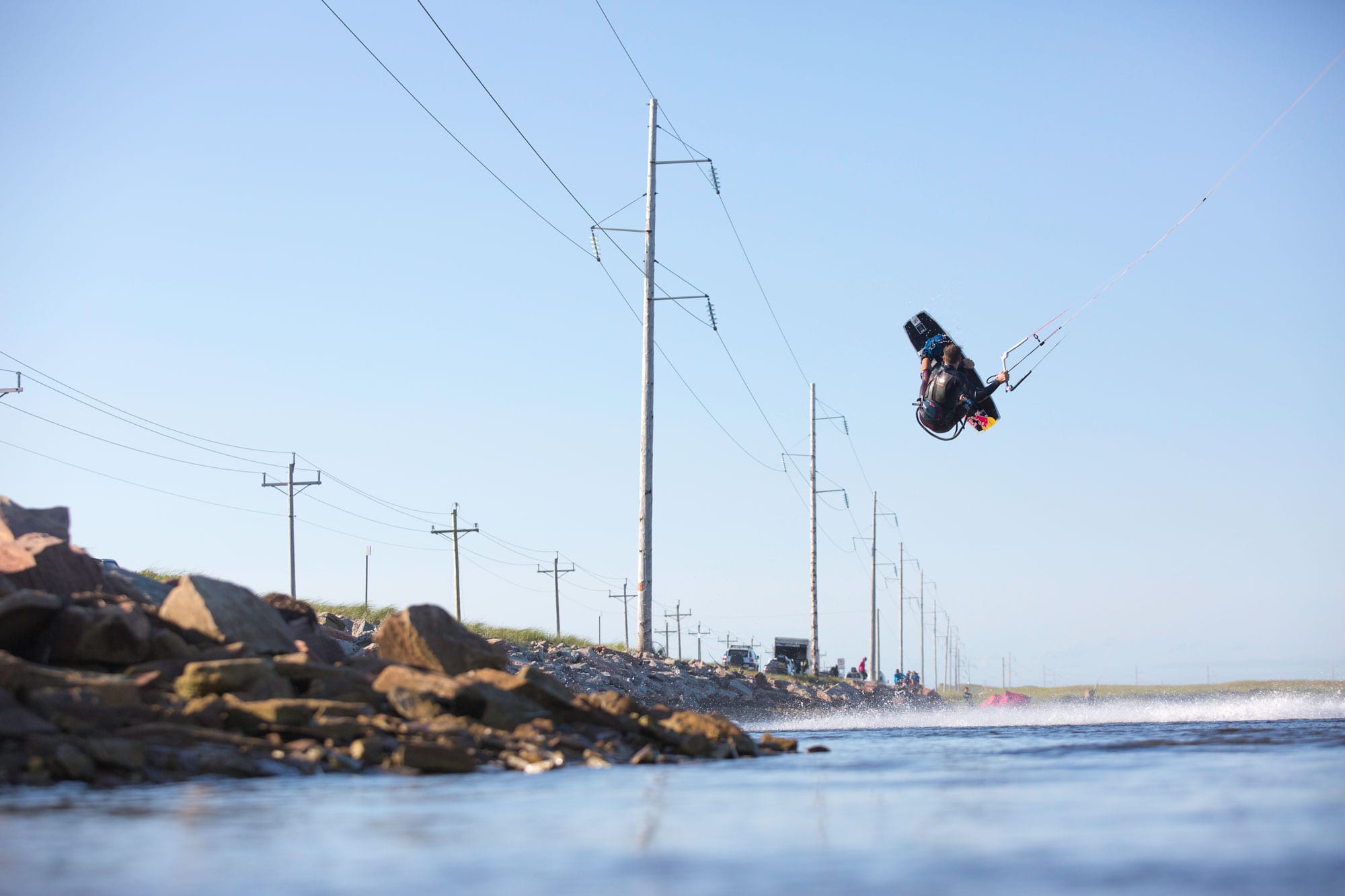
Hadlow in the Magdalen Islands enjoying slick conditions that are rarely seen on a world tour event. // Photo Toby Bromwich
AS KITEBOARDING’S FIRST CHILD PRODIGY, HOW DID YOUR PARENTS HANDLE YOUR EARLY SUCCESS AND WHAT ROLE DID THEY PLAY IN YOUR CAREER?
I was never pushed to do anything that I didn’t want to do, but my dad put me in the right place at the right time. My mom supported me and came along, but my dad was the one who had seen the evolution of windsurfing and saw that I could become someone in kiteboarding. We spent a lot of time together during those early years traveling and my dad always gave me advice and told me what would happen based on my choices. He guided me in the right direction and helped me get to the right places at the right time, but we had a lot of fights as well for sure. Sometimes he might have told me this is the right thing to do and I wouldn’t have agreed, but later on down the line, you figure, OK, that was the right decision after all.
WHEN YOU WERE DOMINATING THE TOUR YOU CAUGHT SOME FLACK ON KITEFORUM FOR TRAINING ON YOUR OWN AND BEING SECRETIVE.
I was really on my own schedule and didn’t let many people in; I thought I could do it all myself. I was secretive because I always wanted to be a step ahead of the game because kiteboarding was evolving so quickly. At that time, I had nothing to learn o of anyone else, so I thought I might as well be on my own. Every year I came back with a margin over the next person. Back then, my results started o as wins and then as people caught up, I would end up with some 2nds. It was working for me from the beginning so I thought it wasn’t worth changing. at was then, but if you look at it now, it makes no sense to do that. Nowadays, the level is so close, there are five or six guys that can do all the tricks and it’s more a matter of style and how you put it together. It makes sense to ride together and you see it in Tarifa all the time; with everyone together, you’re more motivated and your level grows together. ere’s nothing to be secretive about anymore because there’s nothing too new; almost everything has been thought of. It’s really different now.
IN THE HEIGHT OF YOUR CAREER YOU HAD A BIT OF A GRUDGE MATCH WITH KEVEN LANGEREE. WHAT WAS THE SIGNIFICANCE OF THAT?
Me and Kevin had years of battling. I’d say he was definitely always the closest. At the time we were really big rivals on the water. We never really hung out back then. We were different characters and had our own crew. We laugh now, but back then he was the guy to beat and we were always switching between 1st and 2nd, and our levels went up massively because of what we had there.
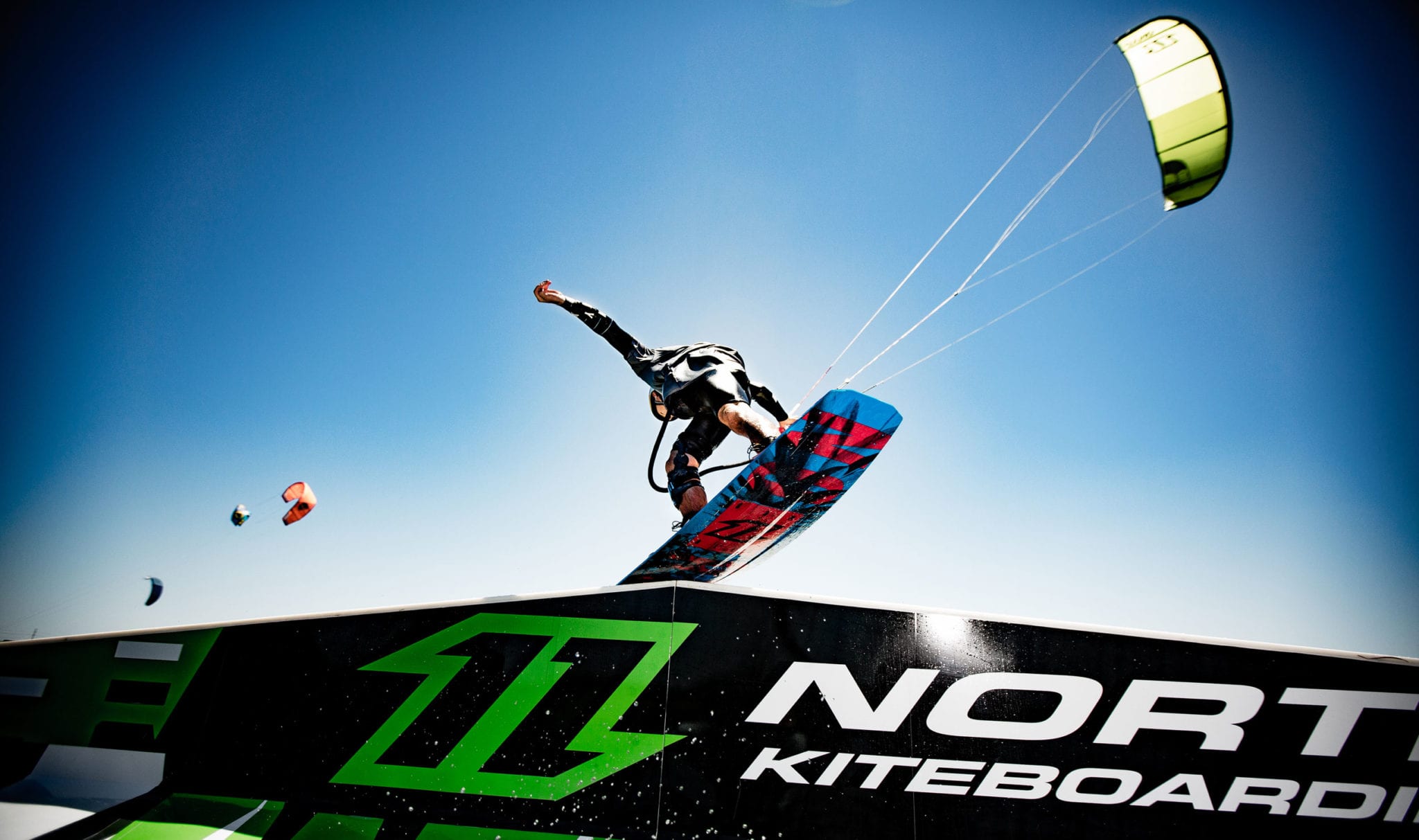
As a North man, Hadlow is free to focus on his riding, with side projects in equipment development and film while enjoying the pinnacle of the sport. // Photo Lance Koudele
WE KNOW THE KITEBOARDING TOUR HAS GONE THROUGH PERIODS OF STRUGGLE AND UPHEAVAL. IN 2009 YOU TOOK A BREAK FROM THE TOUR, WHICH WAS LIKELY NO EASY DECISION AT THE TIME. HOW HAS STEPPING AWAY FROM COMPETITION CHANGED YOUR CAREER?
2009 was a bad year for the tour. ere were four events with different points allocated to different events, and it didn’t work in my favor. I had been competing for seven years straight, so I felt like I needed to do something else. Maybe it wasn’t the best decision, but personally, I needed to take a break. Spending an entire year training for just four events was the nal kicker for me, so I decided I was going to see what I could do away from competition. I spent two years (2010 and 2011) doing videos ”” I did this RedbullTV thing with Ruben, some wakestyle events and started to ride boots and focus on tricks outside of competition. At first I wasn’t sure if boots and wakestyle boards were the right thing for winning competitions; it took longer to get upwind with the boots, which were way heavier, and the boards just weren’t suited for them. It was in those two years I wasn’t competing that I developed a wake-specific board and the boots got a bit lighter. In 2012, the judging format for the tour had changed. At that point, I was committed to riding boots and it was more quality over quantity, which is something I had always tried to push for within competition. I always said I would come back if the events changed and it suited what I wanted to do ”” and it did, so I was really excited to push a few quality wakestyle tricks into the events. 2012 was bittersweet for me because I had one or two years of experience riding boots over everyone else on tour, but I got injured and spent that season thinking how well I would have done that year, but everything happens for a reason.
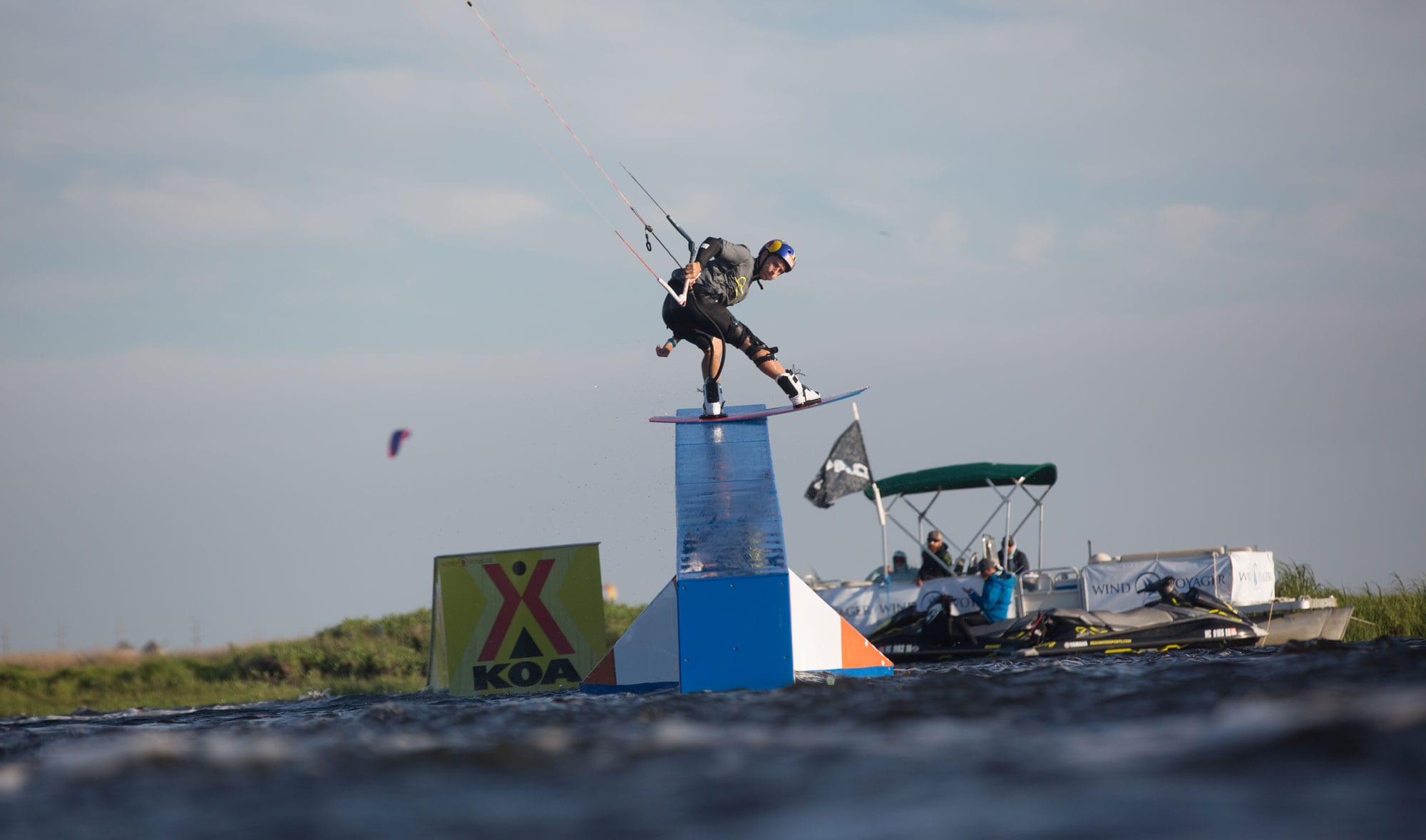
Hadlow takes the KOA kicker to John Wayne rooftop at the 2016 Triple-S Windvoyager Invitational. According to head judge Brian Wheeler, “Unlike any other professional kiteboarder on the planet, Aaron Hadlow bridges two worlds with his dominating performance. A five-time freestyle World Champion, Hadlow has also earned all-star status in the kite park realm with several podiums at the prestigious Triple-S Invitational.” // Photo Toby Bromwich
YOU SPENT THE BULK OF YOUR CAREER WITH ONE SPONSOR, AND ONLY RECENTLY SIGNED WITH NORTH KITEBOARDING. HOW DID YOU MAKE SUCH A LARGE TRANSITION?
Being with North feels like a long time, but I’ve only been under contract for a little over two years. Looking back at my time with Flexi, it always worked because I had a strong position. I was the main person at the company and while I wasn’t making huge increases in my contract, I was able to make my product and get royalty on the stuff that I sold. I learned so much from them ”” from marketing to product development to sales ”” I was involved in everything. ere are no hard feelings today, but it got to the point where it didn’t work anymore. I had the opportunity to use everything that I had developed at Flexi and start my own brand, but when I met with the guys from North in 2014, it presented a huge decision ”” do I go with North or do I really look into the Hadlow brand. I knew I’d need investors and I’d have to basically run everything by myself which meant less time on the water. I had seen it work for other people, like Shinn Boards and Ben Meyer with Axon, but take Vari, he sold his company because he didn’t want to be doing that.
Half the decision was made for me when I spoke to the guys at North and I saw how their company”¨was run and looked at their figures. North had crisp kites and no issues with quality, which is important because I was fed up with the experience I had at some factories. I got a couple of prototypes from North and these kites were perfect. The North deal gave me the opportunity to”¨focus on riding and grow my name to a new audience. I used to get so bogged down with extra”¨work at Flexifoil and my kiting would take the hit. Instead of taking the idea all the way through”¨the whole process, now, I can give feedback, bounce back ideas and there’s an entire team in place”¨to get it done. It’s much less time consuming and I can get to the same place, but in a different way.
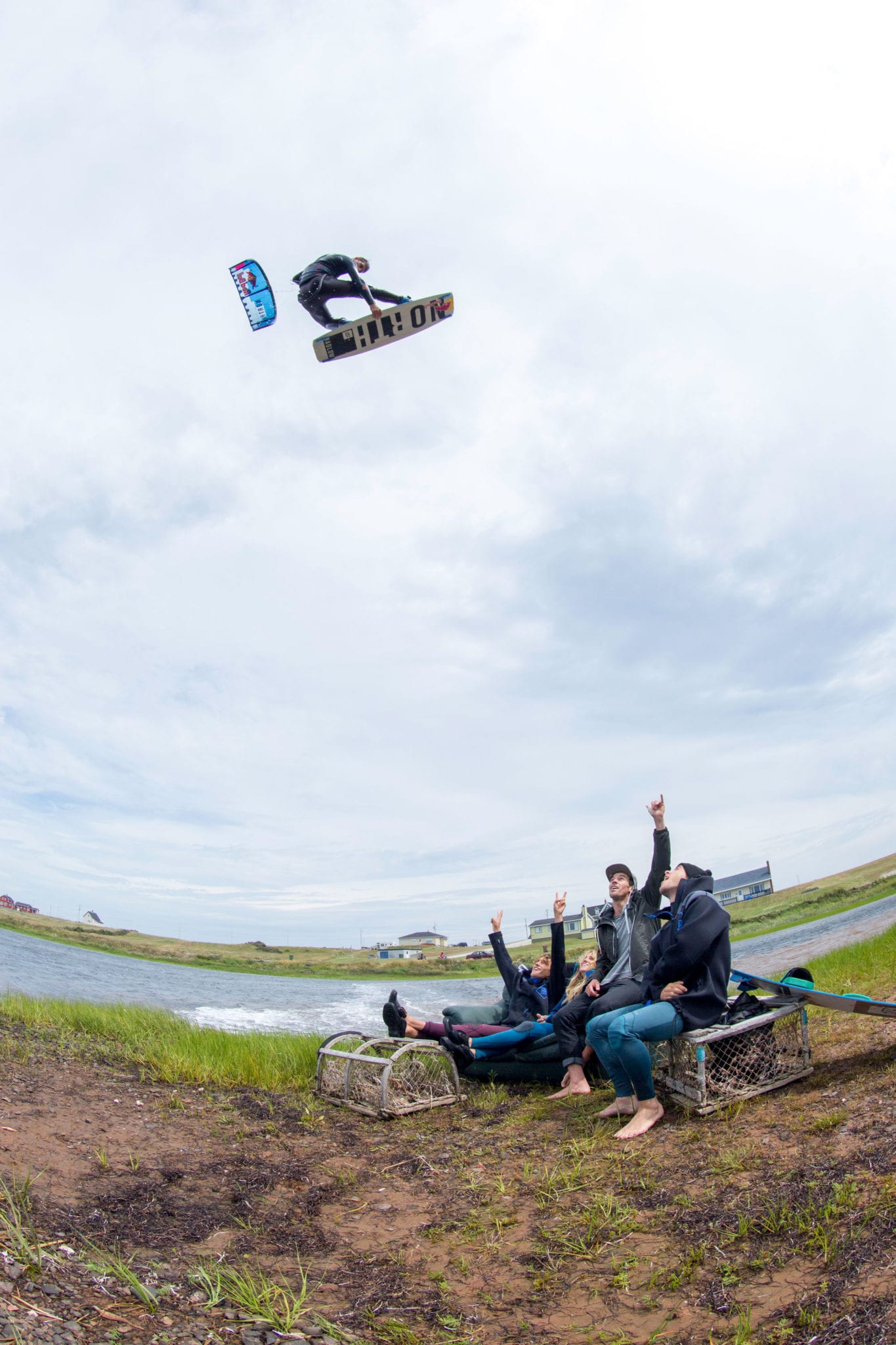
At North, Hadlow has become a part of a much larger team. // Photo Toby Bromwich
THIS LAST TOUR WAS ANOTHER BIG YEAR WITH AN OVERALL WIN AND A BACK-TO-BACK TITLE AS THE RED BULL KING OF THE AIR. YOU ARE THE ICON OF A TRUE COMPETITOR. HOW DO YOU CONCEIVE THAT DRIVE AS IT STEERS YOUR CAREER GOING FORWARD?
Competition has played the most important role in my life. I would not have pushed myself to the limits that I have without it. Still today, it drives and motivates me. Without it, at this stage in my career, I would struggle for the motivation to keep up with some of the tricks which would maybe cause me to choose to go in another direction. Moving forward, I hope to put more focus on park riding, but the real key for me is expressing my riding, showing the world what I can do and inspiring people to kite.
This article was first featured in Tkb’s fall 2016 issue, Vol. 13, No. 3. Want more like this? Subscribe here


